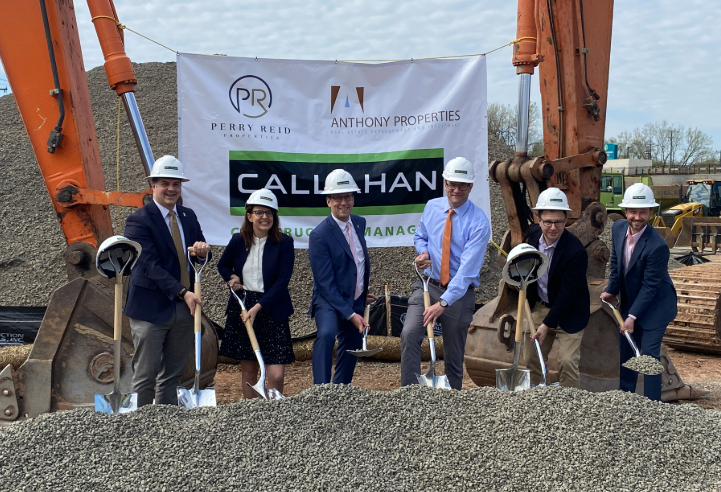News: Connecticut
Posted: September 18, 2007
Connecticut takes steps and moves forward with significant brownfields initiatives
No longer should Connecticut be hailed the land of steady habits, especially when addressing the state's brownfields. For the second year in a row, Connecticut is taking large steps and moving forward with significant brownfield initiatives. With smart growth principles gaining momentum, the state has embraced meaningful brownfield reform and is taking its brownfield programs to a new level in order to stimulate investment and rehabilitation of these idle properties.
In 2006, through legislative reform, the state began to address new brownfield programs, established a new Office of Brownfield Remediation and Development and created a Task Force to study the state's existing regulatory framework. The Task Force submitted its report and recommendations to the Connecticut legislature in February 2007 and, by the end of the session, a new law was passed enabling Connecticut to continue to improve its brownfield regulatory landscape.
Signed by the Governor on July 6, 2007, Public Act No. 07-233 represents continued and significant progress toward redeveloping Connecticut's brownfields. The legislation provides a framework that encourages private sector initiatives, creates more certainty, expands state funding, minimizes risk and streamlines the bureaucratic process. Highlights of the 2007 legislation are:
Expansion of Eligible Applicants. State financial assistance is now available to a much wider array of applicants - any for-profit, nonprofit organization or entity, a local or regional economic development entity, a municipality or any combination thereof.
Expanded Types of Financial Assistance. Grants, extensions of credit, loans, loan guarantees or governmental participation interests in loans, are all available financial tools.
Expanded Use of Financing. Eligible project costs include site investigation and assessment, planning and engineering, consultant costs, laboratory analysis, investigatory and remedial contractors, architects, attorneys' fees, feasibility studies, appraisals, market studies, real property acquisition, construction and infrastructure improvements relating to remediation, demolition, asbestos, hazardous waste and PCB removal, remediation, groundwater monitoring, environmental insurance and other reasonable expenses.
Role of Licensed Environmental Professionals (LEPs) is enhanced. Under the new law, LEPs are presumed to guide a site investigation and remediation unless, within 75 days after notice by the Connecticut Department of Environmental Protection (DEP) that a Transfer Act filing is complete, the DEP Commissioner notifies the certifying party that the DEP shall retain reviewing authority.
Defining "DONE". When is site remediation finally over? Three years after a LEP submits the final verification provided that the Commissioner of DEP does not give notice, during that time, that an audit will be conducted. If, however, the verification was materially inaccurate or misleading, or the remediation failed to prevent a substantial threat, the Commissioner may conduct an audit at any time.
Further Liability Protection. A covenant not to sue may now be entered into at an earlier stage in the remedial process. If the DEP commissioner approves a brownfield investigation and remediation schedule, the prospective purchaser or owner may receive a covenant not to sue. And, the fee for such covenant may be in installments. Additionally, some municipal and nonprofit economic development corporations may receive a covenant at no cost.
Tax Relief. Local, municipal tax assessors are now authorized to reduce the value of any polluted property if a property owner enters into a voluntary remediation agreement with DEP, files the agreement on the land records and develops an approved remediation plan for the property.
Expansion of State Financed TIF Developments. The type of development and end-use is expanded for purposes of tax increment financing (TIF) by the Connecticut Development Authority. Residential and mixed-use development may now be financed using TIF.
Loan Guarantees. The Connecticut Development Authority may establish a loan guarantee program to provide guarantees of not more than 30% of the loan to lenders who provide financing to brownfield owners or developers.
These new initiatives are very important tools designed to stimulate redevelopment of the state's brownfields. And, these initiatives are a start. The legislature reauthorized the Task Force for 2007-2008. While the Task Force will continue to build upon and refine the programs established in 2007 and turn a watchful eye to the organizational structure, the legislature also asked the Task Force to further evaluate other incentives that could not be accomplished in 2007, namely the role of environmental insurance and tax credits. Stay tuned.s
Ann Catino is a partner and chair of the Environmental and Land Use Practice Group at Halloran & Sage LLP, Hartford, Conn.
Tags:
Connecticut
MORE FROM Connecticut
Highcap Group brokers $41.1 million sale of two building multifamily portfolio
Norwalk, CT Highcap Group has completed the sale of two luxury multifamily properties with a total of 120 units for a combined purchase price of $41.4 million.

Quick Hits







.png)